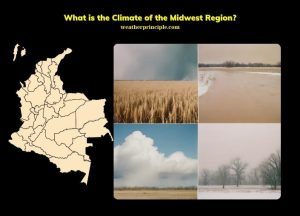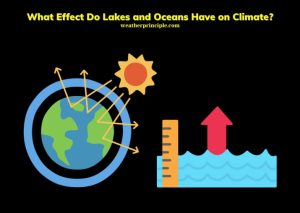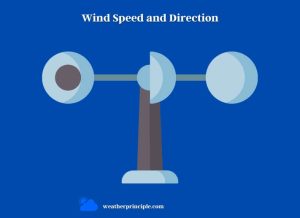Published on: January 18, 2024
Written by Taha Nur / Fact-checked by Kader Khan
The climate of the Pacific Northwest is characterized by mild, wet winters and dry, cool summers. This unique climate is influenced by the Pacific Ocean and the region’s mountain ranges.
The Pacific Northwest, encompassing states like Washington and Oregon, is renowned for its distinct climate. This region, bordered by the Pacific Ocean, experiences a climate that significantly differs from the typical North American weather patterns. The proximity to the ocean plays a crucial role in shaping the weather, leading to mild and moist conditions, especially during the winter months.
Cities in the Pacific Northwest, such as Seattle and Portland, are famous for their lush green landscapes, a direct result of the frequent rainfall. This rainfall, while more abundant in the winter, is generally lighter and more persistent than in other regions, contributing to the area’s verdant environment. The Pacific Northwest coast, known for its rugged beauty, also plays a part in the region’s climate. The coastal areas often experience fog and cool breezes, a stark contrast to the drier, warmer conditions found inland.
The region’s map is marked by significant geographical features like the Cascade Range and the Rocky Mountains. These mountain ranges influence the climate, creating rain shadows and varying weather patterns across different areas. The Pacific Northwest is also home to various Native American tribes, who have historically adapted their lifestyles to the northwest coast climate. Their rich cultural heritage is deeply intertwined with the natural environment.
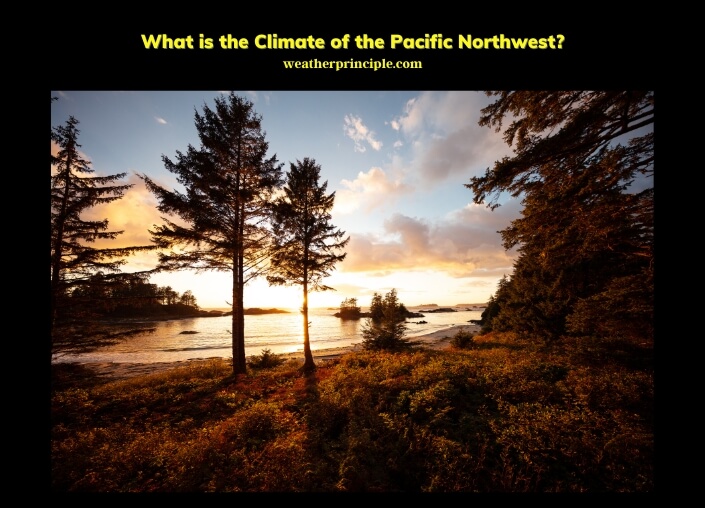
In terms of weather, the Pacific Northwest is known for its unpredictability. Sudden rain showers can be followed by bright, sunny skies, a characteristic that residents have come to expect and appreciate. This variability is a defining feature of the region’s climate.
For those interested in learning more about the Pacific Northwest, its diverse climate, and its unique cultural and geographical aspects, the detailed article below offers an in-depth look at this fascinating region.
What is the Climate of the Pacific Northwest?
The Pacific Northwest Climate
Overview of the Region’s Weather Characteristics
The Pacific Northwest, a region that includes states like Washington and Oregon, is known for its unique climate. This area experiences a mix of weather patterns, largely influenced by its proximity to the Pacific Ocean and the presence of various mountain ranges. The climate here is often described as oceanic or maritime, with mild temperatures throughout the year. Unlike many other regions, extreme temperatures are rare, making it a comfortable place to live and visit.
Influence of the Pacific Ocean and Mountain Ranges
The Pacific Ocean plays a significant role in shaping the climate of the Northwest. It acts as a natural thermostat, keeping the temperatures relatively consistent. In the summer, the ocean cools the air, while in the winter, it helps to warm it.
The mountain ranges, such as the Cascades and the Rockies, create a natural barrier. They influence rainfall patterns, leading to wetter conditions on the western side and drier conditions in the eastern areas.
Seasonal Weather Patterns in the Pacific Northwest
Spring Climate: Transition and Variability
Spring in the Pacific Northwest is a time of transition and variability. The region starts to shake off the winter chill, and temperatures begin to rise.
It’s not uncommon to experience a mix of sunny days and rain showers. This season sets the stage for the lush, green landscapes the area is famous for, as the increased sunlight and persistent rain encourage new growth.
Summer in the Northwest: Dry and Cool
Summers in the Pacific Northwest are quite different from the typical hot and humid summer experienced in many other parts of the United States. Here, the summers are dry and relatively cool. Rainfall is less frequent, and the temperatures are comfortably warm, making it an ideal time for outdoor activities. This weather also contributes to the region’s reputation as a haven for outdoor enthusiasts.
Autumn Weather: Preparing for the Wet Season
As autumn arrives, the Pacific Northwest begins to prepare for its wet season. The temperatures start to drop, and the rain becomes more frequent. This season is characterized by its vibrant fall colors and crisp air. It’s a transitional period where the region starts to shift from the dry, sunny days of summer to the wetter, cooler days of winter.
Winter in the Pacific Northwest: Mild and Wet
Winter in the Pacific Northwest is known for being mild and wet. Snow is rare in the lower elevations but more common in the mountains. The region doesn’t experience the harsh winters seen in other parts of the country. Instead, it’s characterized by frequent rain and overcast skies, with temperatures rarely dropping below freezing. This mild winter weather is a hallmark of the region’s climate.
Geographical Influences on the Climate
The Role of the Cascade and Rocky Mountains
The Cascade and Rocky Mountains play a crucial role in the climate of the Pacific Northwest. These mountain ranges act as a barrier, affecting how weather systems move through the region. The Cascades, in particular, have a significant impact on rainfall. The western slopes receive heavy rainfall, while the eastern slopes lie in the rain shadow, receiving much less precipitation.
Coastal vs. Inland Climate Variations
The climate of the Pacific Northwest varies significantly from the coast to the inland areas. Coastal areas tend to have milder temperatures and higher humidity, with frequent fog and mist. In contrast, the inland regions experience more extreme temperatures, with hotter summers and colder winters.
Comparison of Coastal and Inland Weather Statistics
| Feature | Coastal Areas | Inland Areas |
| Average Temperature | Cooler, more consistent | More extreme variations |
| Humidity | Higher | Lower |
| Precipitation | Higher, frequent fog | Less, more distinct seasons |
Pacific Northwest Weather Phenomena
The Pineapple Express: Understanding Its Impact
The Pineapple Express is a weather phenomenon unique to the Pacific Northwest. It’s a strong and persistent flow of moisture-laden air from the Hawaiian Islands to the Pacific Northwest. This atmospheric river can bring significant rainfall and warm temperatures, often leading to flooding and rapid snowmelt in the mountains.
Fog and Coastal Mists: A Common Sight
Fog and coastal mists are common sights along the Pacific Northwest coast. These conditions are created by the interaction of the cool ocean air with the warmer land air. This fog can be particularly dense, especially in the mornings, and is a defining feature of the coastal climate.
Frequency of Fog and Mist in Major Coastal Cities
| City | Days with Fog/Mist per Year |
| Seattle, WA | 120 |
| Portland, OR | 115 |
| Astoria, OR | 210 |
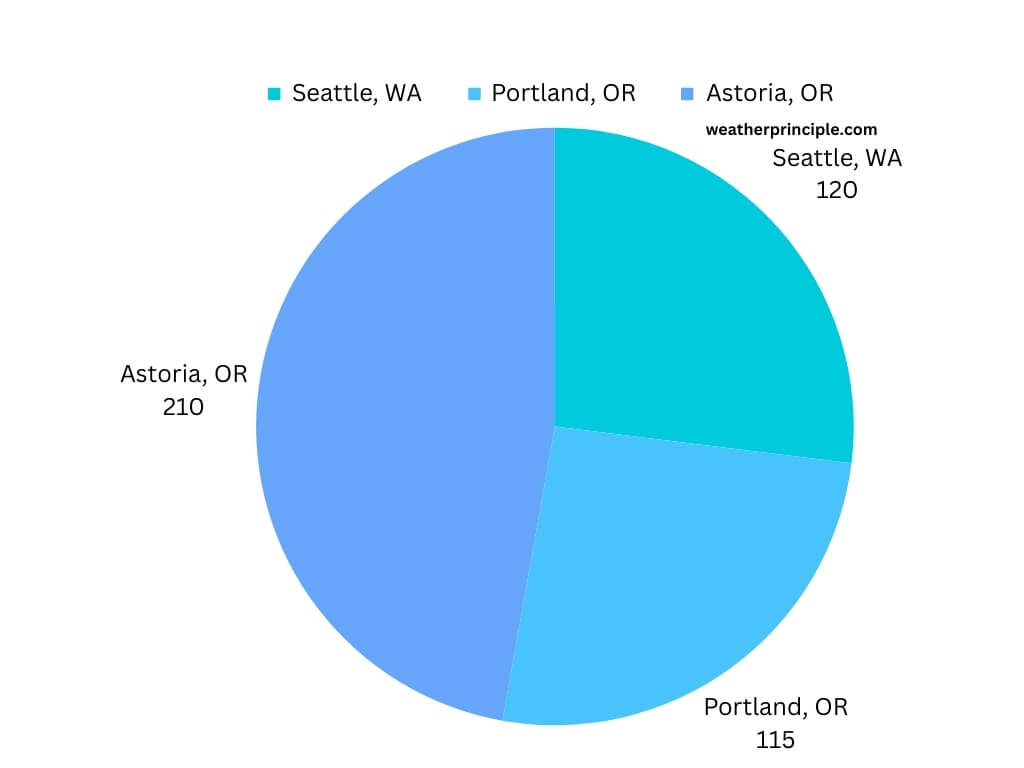
The Impact of Climate on Pacific Northwest Flora and Fauna
Native Plant Species and Their Adaptation to the Climate
The climate of the Pacific Northwest has led to a diverse range of plant species that have adapted to its unique conditions. The region is known for its dense forests, which include evergreen conifers like Douglas firs and western hemlocks. These plants thrive in the wet, mild climate, contributing to the lush greenery that the Pacific Northwest is famous for.
Wildlife and Seasonal Climate Adaptations
The wildlife in the Pacific Northwest has also adapted to the seasonal climate variations. Species like the Roosevelt elk and the black-tailed deer have developed behaviors and physical adaptations that allow them to thrive in both the wet winters and dry summers. The region’s rivers and streams, swollen by winter rains, provide vital habitats for salmon, which are crucial to the local ecosystem.
Unique Weather Challenges in the Pacific Northwest
Managing Heavy Rainfall and Flooding
One of the most significant weather challenges in the Pacific Northwest is managing the heavy rainfall, especially during the winter months. This rainfall can lead to flooding, impacting both urban and rural areas. Effective water management and flood control measures are essential to mitigate these risks.
Wildfire Risks During Dry Summers
While the Pacific Northwest is known for its wet climate, the dry summers bring a risk of wildfires. These fires can be devastating, affecting both natural areas and human settlements. Preparing for and managing these fires is a critical concern during the summer months.
Historical Data on Rainfall and Wildfire Incidents
| Year | Average Rainfall (inches) | Number of Wildfires |
| 2018 | 38.19 | 1,743 |
| 2019 | 36.85 | 1,821 |
| 2020 | 34.78 | 2,027 |
The Future of the Pacific Northwest Climate
Climate Change Predictions and Potential Impacts
Climate change is expected to have significant impacts on the Pacific Northwest. Predictions include increased temperatures, changes in precipitation patterns, and more frequent extreme weather events. These changes could alter the region’s climate, affecting everything from agriculture to wildlife.
Preparing for Changing Weather Patterns
As the climate continues to evolve, preparation and adaptation are key. This includes everything from building more resilient infrastructure to developing new agricultural practices. Understanding and anticipating these changes will be crucial for the region’s future.
Summary
The climate of the Pacific Northwest is a complex interplay of geographical features, oceanic influences, and seasonal variations. Its mild, wet winters and dry, cool summers create a unique environment that supports a diverse range of flora and fauna.
The region faces unique weather challenges, including managing heavy rainfall and the risk of wildfires. As the climate changes, adapting to these new conditions will be essential for the continued prosperity and health of the region.

